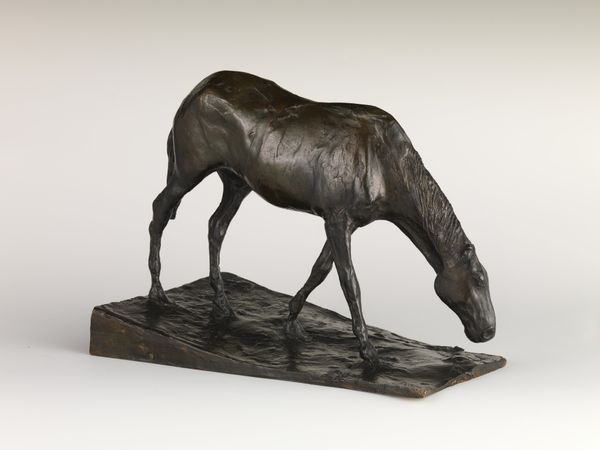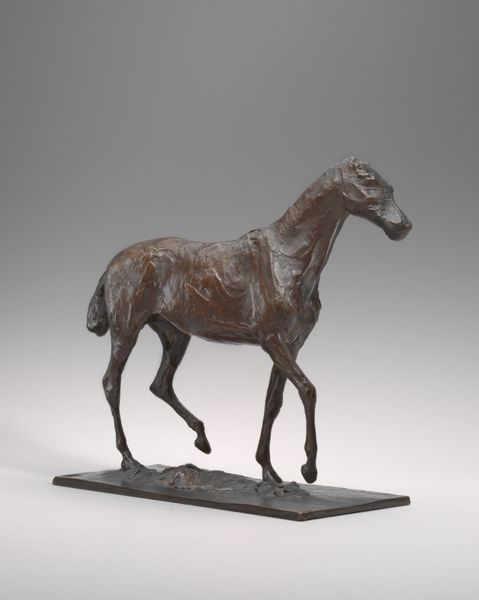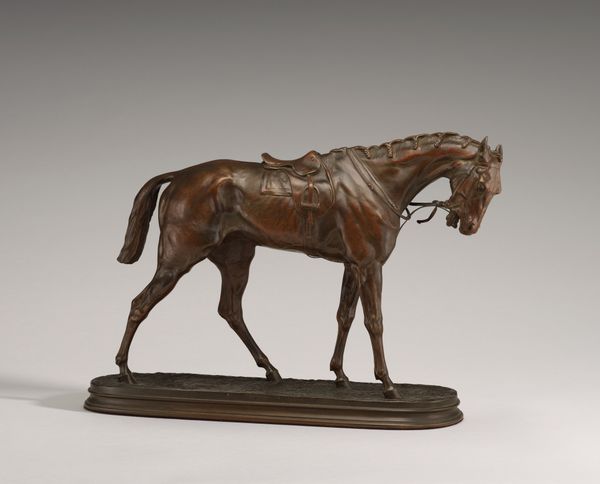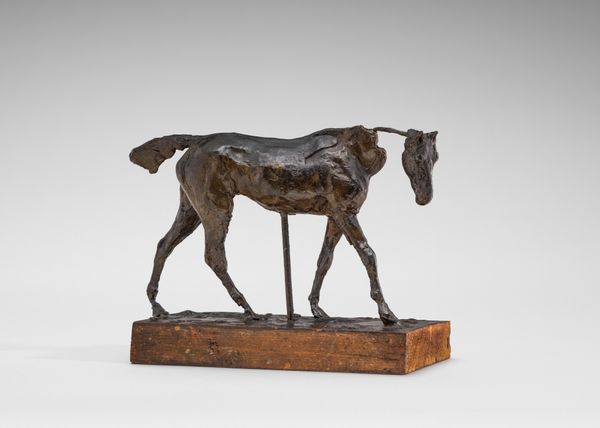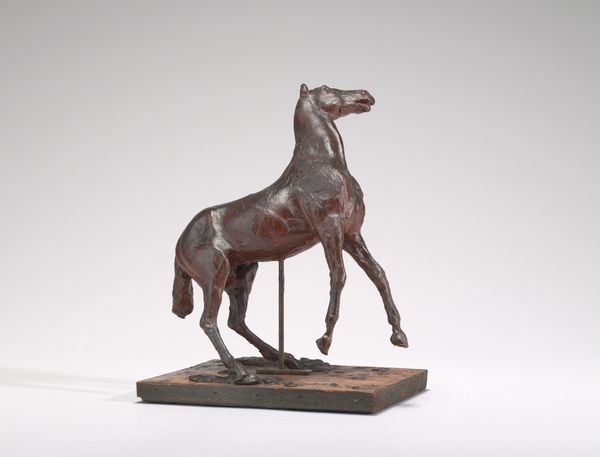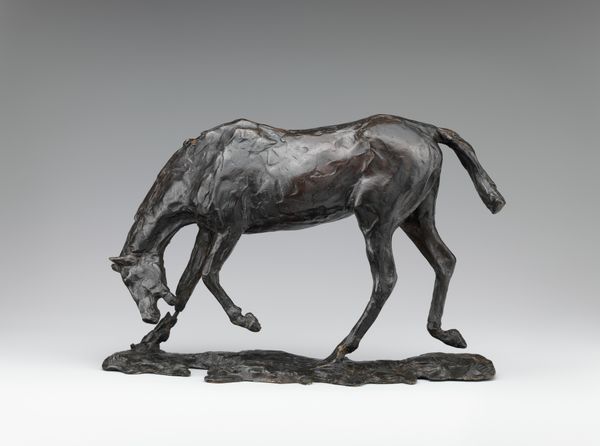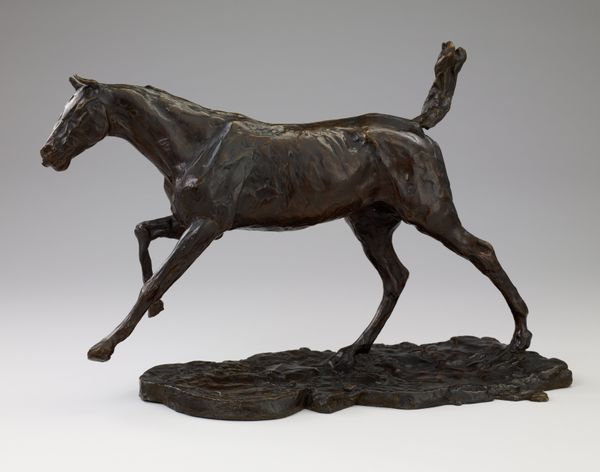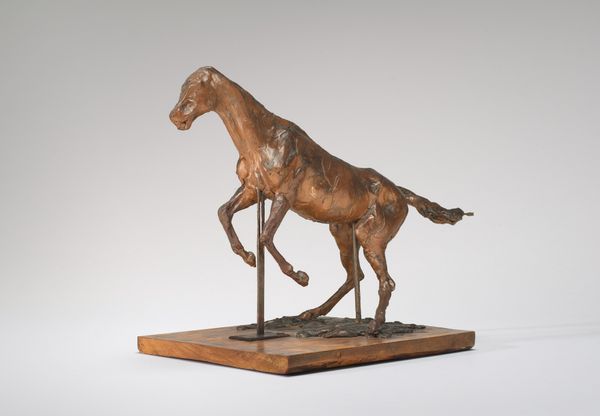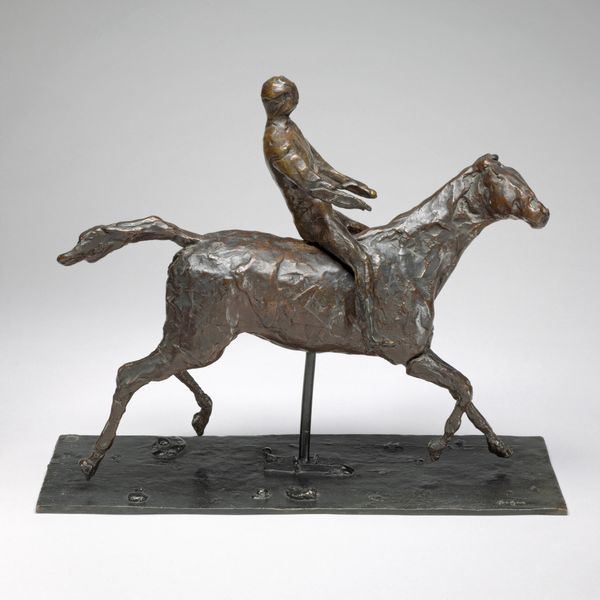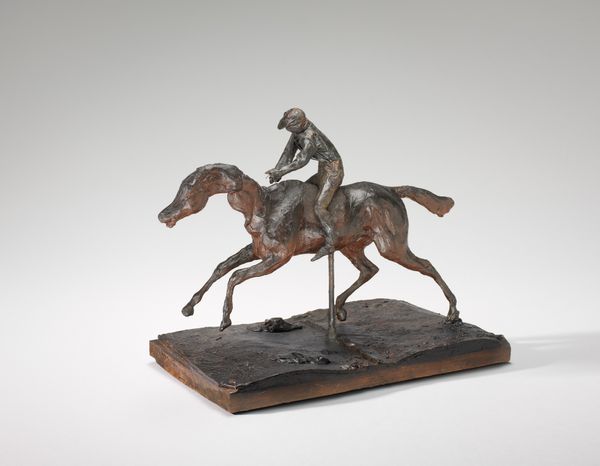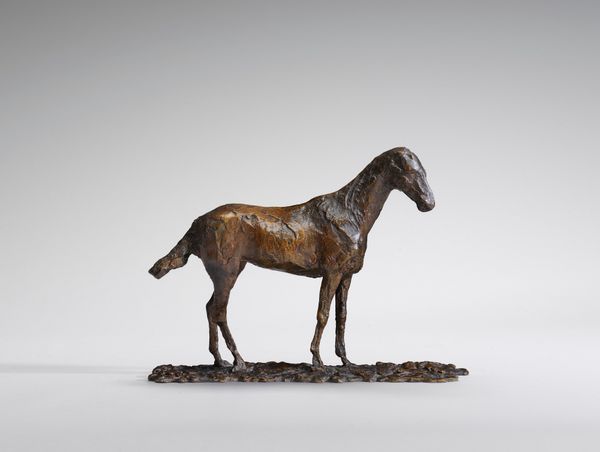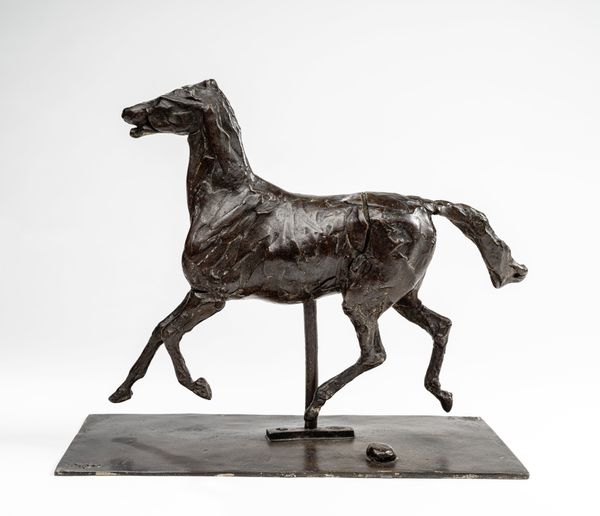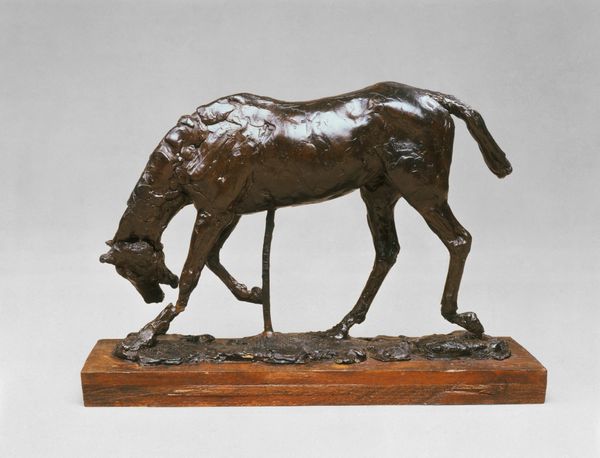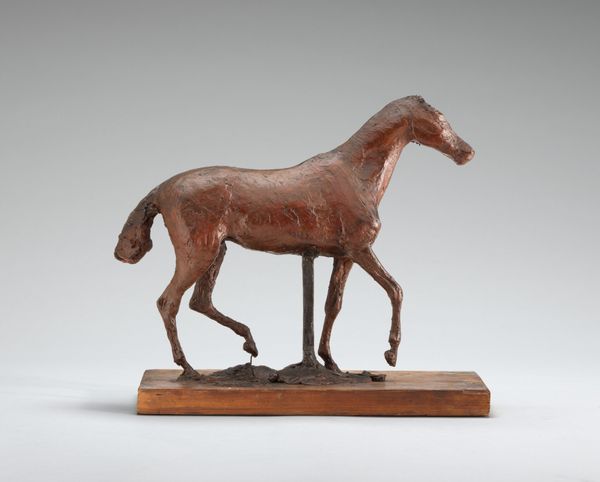
Thoroughbred Horse Walking, Part of the Neck Missing original wax early 1870s, cast c. 1920/1960s
0:00
0:00
bronze, sculpture
#
animal
#
impressionism
#
sculpture
#
bronze
#
figuration
#
sculpture
#
modernism
Dimensions: overall with base: 13.2 x 4 x 20.3 cm (5 3/16 x 1 9/16 x 8 in.) height without base (of horse): 12.9 cm (5 1/16 in.)
Copyright: National Gallery of Art: CC0 1.0
Editor: This is Edgar Degas’ “Thoroughbred Horse Walking, Part of the Neck Missing,” originally in wax from the early 1870s, but this bronze cast is from later, around 1920-1960. The horse's posture suggests movement, but also a certain vulnerability because of the missing portion. What does this fragmented representation convey to you? Curator: It immediately makes me consider themes of power and the physical objectification often intertwined within representations of horses, particularly thoroughbreds in 19th-century art. The missing neck disrupts the expected idealization, inviting a more critical lens. What assumptions are made when we see animals depicted within art and how is this further compounded when you consider the social stratification underpinning the world of thoroughbreds? Editor: So, it's almost a deconstruction of traditional equestrian statues, highlighting social power? Curator: Precisely! It’s crucial to examine how Degas' work might be subtly questioning or subverting the visual language typically used to reinforce those structures of power. Moreover, it opens up the work to potential explorations into the animal within art, potentially acting as metaphors for the experience of certain segments of the population within Europe during this period. Does that resonate with you at all? Editor: That reframing makes me see it in a totally new way! Curator: Thinking about the artistic conventions prevalent during the era the original wax was crafted helps to see Degas’ statue is a conscious move away from idealised heroic representations towards something more honest and fragmented. It's about disrupting those expected visual narratives and prompting us to critically analyze not only artistic conventions but what they reflected and reinforced within society. Editor: I now see it challenges societal and artistic norms simultaneously. I appreciate you helping me see beyond the initial image to grasp these layered interpretations.
Comments
No comments
Be the first to comment and join the conversation on the ultimate creative platform.
